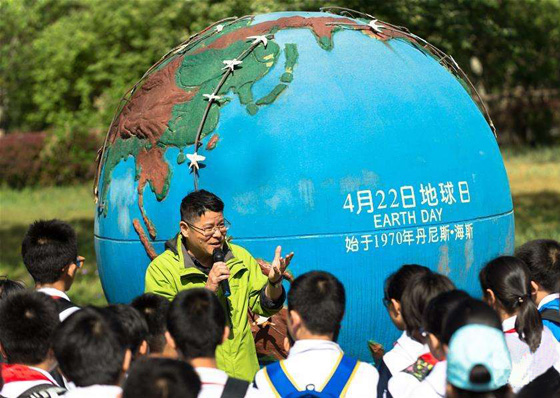Like the United Nations and many national governments around the world, the Chinese government has sought to use education as an important means of fostering environmental stewardship and ecological sustainability. After a series of environmental education-related governmental initiatives that began in the 1980s, in 2003 the Ministry of Education took a significant step in formally requiring the sweeping “infusion” (shentou) of environmental education content in all subjects at all levels of China’s public school system. More than ten years later, however, it is clear that this mandate is going widely unfulfilled: most Chinese children still have no access to the environmental learning opportunities that the policy was designed to offer. While this is troubling, particularly given the gravity and urgency of China’s environmental challenges, there are also some promising new developments in Chinese environmental education that are worthy of international attention and support. Since the values and choices of Chinese citizens may have ecological impacts that are felt throughout the world, China’s environmental education efforts are consequential for all of us.

Over the past several decades, one of the most striking characteristics of Chinese environmental education has been the importance of government-NGO partnerships. The Ministry of Education’s nationwide environmental education mandate and the progressive guidelines for its implementation are in fact the direct outcomes of a remarkable decade-long partnership begun in 1997 between China’s Ministry of Education, the Chinese office of the environmental NGO Worldwide Fund for Nature (WWF-China) and British Petroleum. Dubbed the Environmental Educators’ Initiative, the partnership resulted in the development of environmental education training centers at 21 normal universities around the nation and the creation of a set of national environmental education guidelines that compare well with prevailing international best practices. Yet while the Ministry of Education guidelines and their plans for implementation look great on paper, they encounter significant obstacles in China’s exam-focused schools. Even when teachers are sufficiently motivated to include environmental content in their classes, they often lack the training to do so. Faced with these challenges, Chinese government officials and NGOs are responding with three promising initiatives: a large-scale teacher training effort, the creation of environmental learning centers or “nature schools”, and the establishment of an environmental education law.
Teachers are obviously vital to the success of any educational effort, and the lack of trained and motivated teachers has long been a major obstacle to the success of China’s environmental education mandate. Recently, Chinese teachers are beginning to receive more of the support that they need. At an international science education conference that I spoke at in China last summer, officials from the Ministry of Environmental Protection’s Center for Environmental Education and Communications (CEEC) told me of their plans for a major three-year training initiative that will provide three thousand primary and secondary teachers with training and resources in environmental education. Like the Environmental Educators’ Initiative mentioned above, the plan centrally involves WWF-China, and involves backing from a major corporation (in this case Volkswagen.)
Teacher training and motivation are critical, but they’re still often insufficient to ensure that kids receive opportunities—particularly hands-on, outdoor opportunities—to learn and care about their environments. In places like the United States, Japan and Taiwan, however, professional environmental learning centers and “nature schools” supplement and support what schools are able to offer children. Thus it is encouraging to see similar schools and centers beginning to emerge in China, and a growing group of (largely middle-class, urban) Chinese families who value the “nature education” (ziran jiaoyu) that such centers provide. These nature schools are taking a variety of forms, but they often involve some sort of partnership between NGOs and government officials. NGOs provide expertise in environmental education programming and pedagogy, while offices of the local and central government may manage and provide access to outdoor learning spaces such as nature reserves. Some nature schools, such as the Gaia Nature School--run by the prominent Chinese environmental NGO Friends of Nature—also play a key role in training a growing cadre of nature educators. Gaia Nature School is also among the Chinese nature schools that have established partnerships with nature schools in Japan, where more than 4000 nature schools play a crucial role in delivering outdoor and environmental learning experiences to children.
Japan also has an environmental education law, enacted in 2003, which provides financial support and a certification regime for the provision of environmental education. Taiwan enacted a similar law, the Environmental Education Act, in 2011. In both cases, the legal establishment of a certification process for teachers and organizations and the creation of stable sources of funding and personnel help to ensure quality and safety in environmental education programming. In China, the Ministry of Environmental Protection’s CEEC has been working over the past five or six years to promote the passage of a Chinese environmental education law. While the future specifics of such a law remain unclear, CEEC officials report that momentum to create a law appears to be building.
As the Sino-Japanese nature school partnerships attest, nature education and environmental learning have the potential to unite people across often intractable international differences. Now is an excellent time for environmental educators and their organizations in the United States to reach out to their colleagues in China and offer what experience and support they can. A satisfying, sustainable relationship with the natural world is the birthright of every child, and we all benefit when they have one.